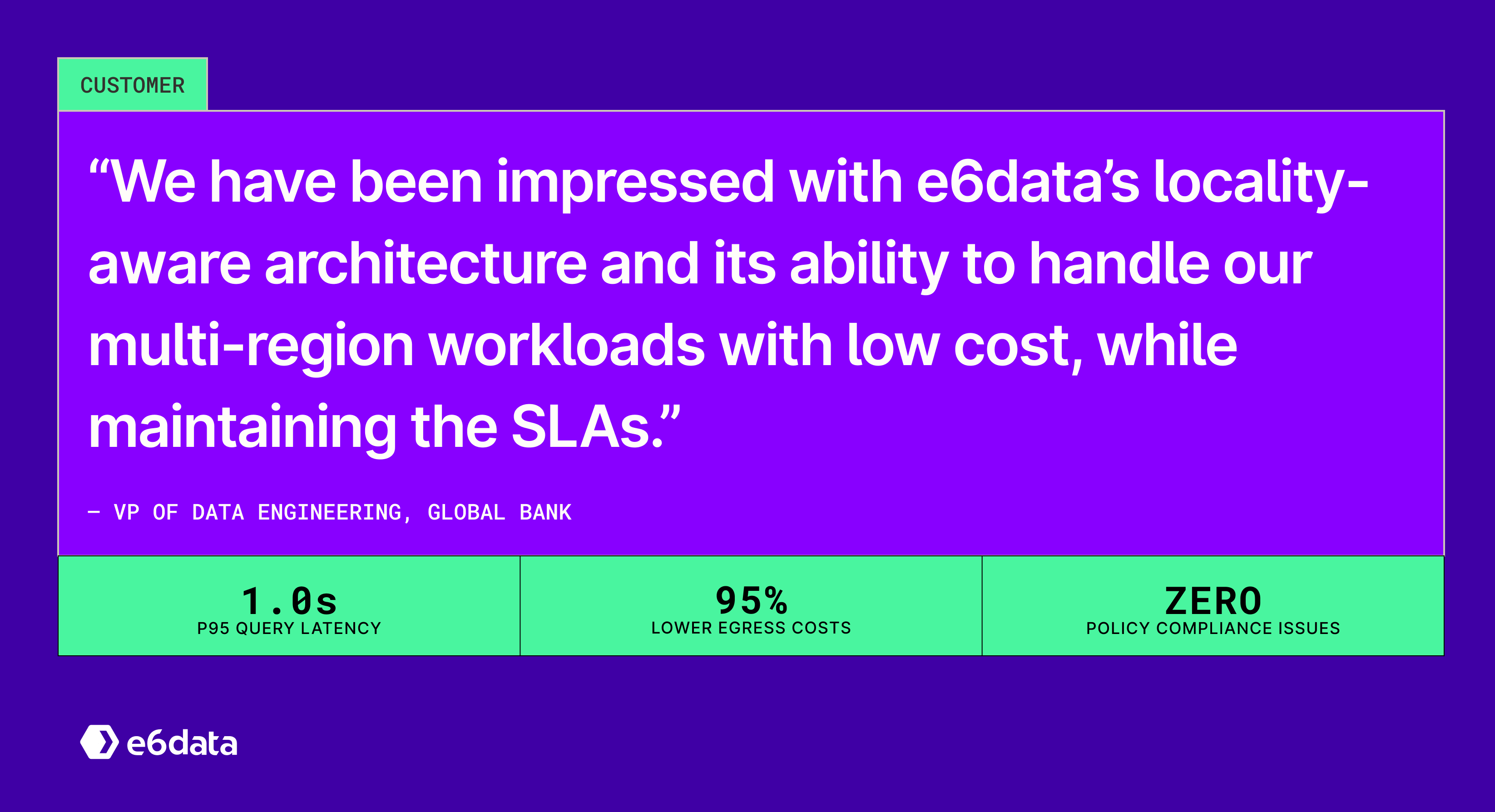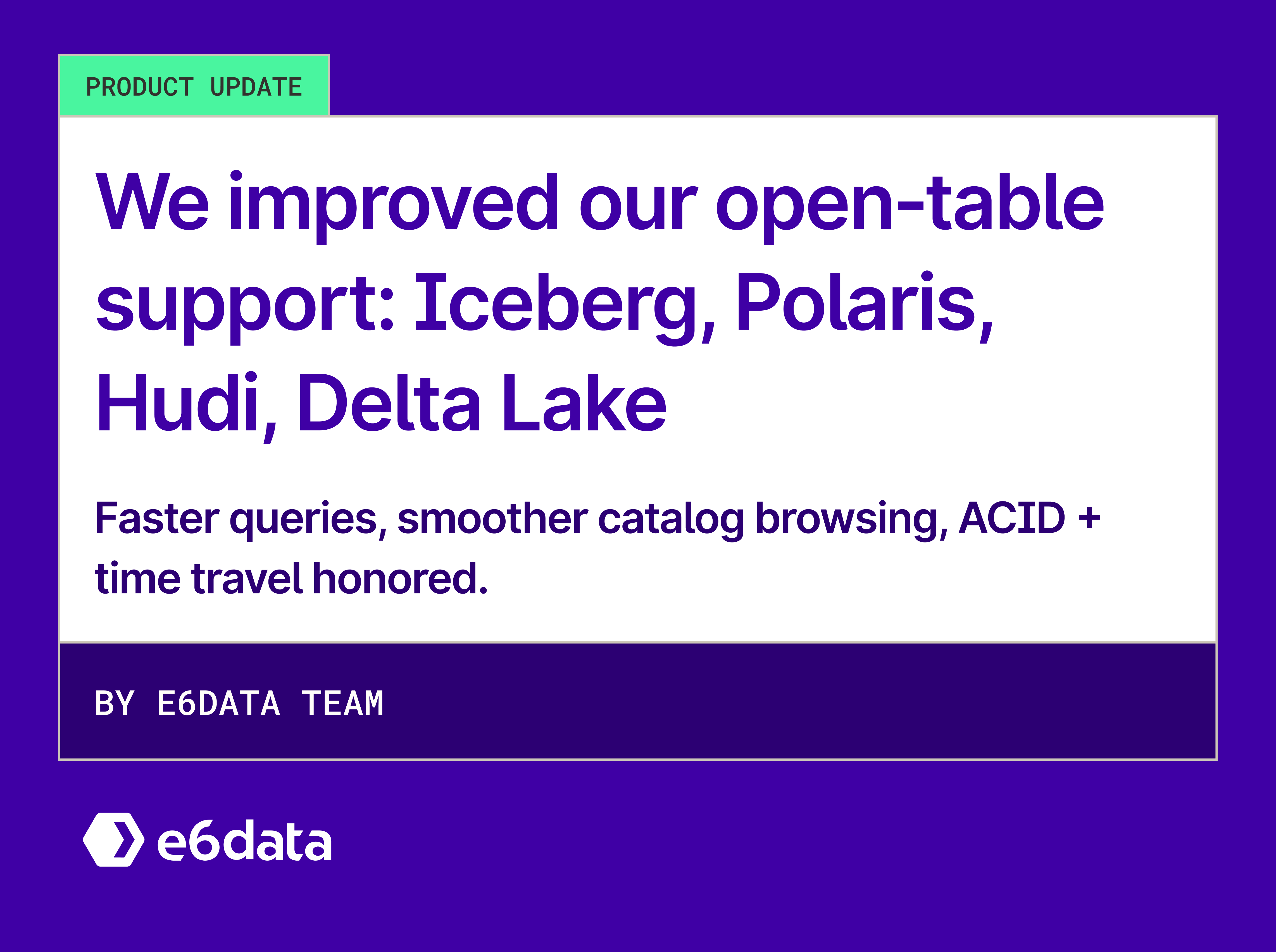Vector Search in MS Fabric: e6data Powers Unified SQL + Semantic Search at 60% lower cost
.png)
e6data powers faster unified SQL + Vector search on Fabric
Microsoft Fabric’s OneLake unified storage is a solid foundation. As of 2025, OneLake is a single, unified, logical data lake for your whole organization. Microsoft calls it: OneDrive for data. It brings structured and unstructured data under one roof. But some teams still struggle to query across formats without jumping through hoops:

- Want to search across call transcripts, reviews, and dashboards? You need SQL and vector search (aka similarity or semantic search).
- Want relevance over exact match? You’re duct-taping keyword search, embedding databases, vector database alternatives, and ETL pipelines.
- Want speed at scale? You’re either bottlenecked by capacity units or drowning in cost from over-provisioning.
So most teams choose: either stay in SQL and miss out on meaning, or ship data out and break governance. Neither works long-term.
Now, You Have e6data to Run Vector Search on Fabric

e6data is a lakehouse compute engine which is now integrated with Fabric. It brings fast, unified querying—structured and unstructured, in the same SQL statement.
- 10x performance: Atomic scaling, coordinator-free architecture, 60% lower cost. Handles 1000+ QPS with sub-second latencies. A clear leap in vector similarity search performance.
- Semantic search built-in: Turn reviews, tickets, and notes into embeddings for optimized semantic search and improved vector similarity search performance. Search by meaning, not just keywords
- No data movement: e6data reads from OneLake directly. No duplication
- No query rewrites: Keep your SQL and start querying both structured and unstructured data with cosine similarity. No learning curve, no vector database alternatives required.
What e6data Helps You Find Today?
SaaS: Churn Signals from Feedback, 10× Faster
Before: Feedback buried in support tickets, surveys, and app reviews. Analysis took weeks. Patterns surfaced too late.
After: e6data semantically searches feedback within OneLake. Support tickets like “UI is confusing” are grouped with “can’t find the button.” Teams act in a day, not weeks. Churn detection moved from reactive to proactive.
Finance: Detecting Risk in Chat Logs
Before: Fraud and churn indicators lived in agent notes and chat transcripts. Detection cycles took 30 days.
After: e6data matches new risk signals to semantically similar past chats. Teams query transcripts and account data in one SQL statement. Risk teams act within hours, not weeks.
Retail: Spotting Return Reasons in Reviews
Before: Trends like “sizing issues” in reviews took 60 days to detect manually.
After: e6data finds every semantically similar complaint, even when customers phrase it differently. Time-to-insight dropped to under a week. Teams respond faster with better ops and pricing.
How e6data Optimizes Semantic + Structured Queries in Fabric
- Atomic, decentralized architecture: No driver node. No bottlenecks. Perfect for bursty or high-concurrency environments.
- Kubernetes-native autoscaling: Optimize Fabric costs, paying only per actual CPU second, resulting in up to 60% lower total costs.
- Optimized execution: Optimized execution leverages vectorized processing, shuffle reduction, and stage fusion for improved semantic search optimization and reduced query latency.
- Zero governance gap: Honors Fabric’s security model—row-level filtering, column masking, and IAM integration.
These technical enhancements power data's high-performance vector search even under heavy concurrency and complex queries (e.g. large table scans)
Forget separate stacks. e6data allows Retrieval-Augmented Generation (RAG) and LLM-based analytics to happen directly on Fabric:
- SQL to filter deals by ARR + vector search to find meetings hinting at churn
- JOIN structured support ticket metadata with semantically grouped complaints
Build LLM apps using live semantic queries over OneLake data
e6data vs Other Alternatives on Fabric

Want to try it? Launch e6data on Fabric (available on Azure Marketplace), run your first SQL + AI query, and experience unified SQL and vector search performance in minutes.
Frequently asked questions (FAQs)
We are universally interoperable and open-source friendly. We can integrate across any object store, table format, data catalog, governance tools, BI tools, and other data applications.
We use a usage-based pricing model based on vCPU consumption. Your billing is determined by the number of vCPUs used, ensuring you only pay for the compute power you actually consume.
We support all types of file formats, like Parquet, ORC, JSON, CSV, AVRO, and others.
e6data promises a 5 to 10 times faster querying speed across any concurrency at over 50% lower total cost of ownership across the workloads as compared to any compute engine in the market.
We support serverless and in-VPC deployment models.
We can integrate with your existing governance tool, and also have an in-house offering for data governance, access control, and security.
.svg)
%20(1).svg)


.jpg)
.svg)
.png)

.svg)
.svg)
.svg)
.svg)
.png)
.svg)